ALSACE VOSGES - Hohrodberg - Grand Hohnack - Giragoutte - Les Trois Epis
Year of visit: 2004, 2007, 2008, 2009, 2010
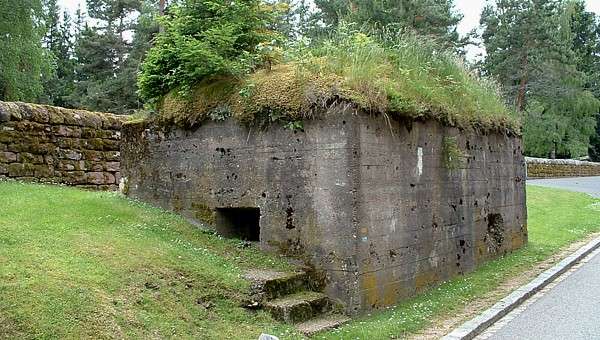
South of the Lingekopf and the Schratzmännele, at the junction of the D 5B1 and the D 11 Vl; a visit to the Hohrodberg German War Cemetery. Next we follow the D 11 Vl eastward passing the memorial for the Red Devils at the Grand Hohnack, further on into the former German territory to the German dressing station near the hamlet of Giragoutte, and to the Deutscher Soldatenfriedhof at Les Trois Epis to return along this road to the French memorial at the Hohrodberg and it's wide panorama over the Munster Valley.
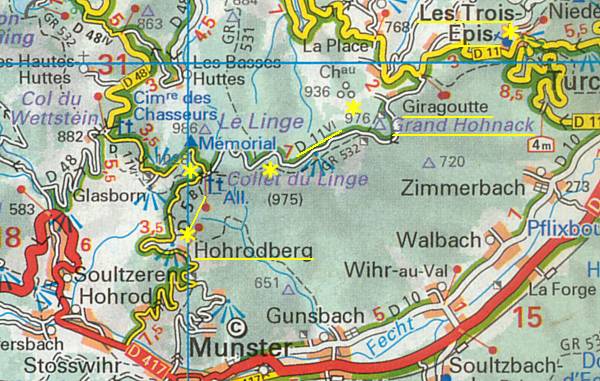
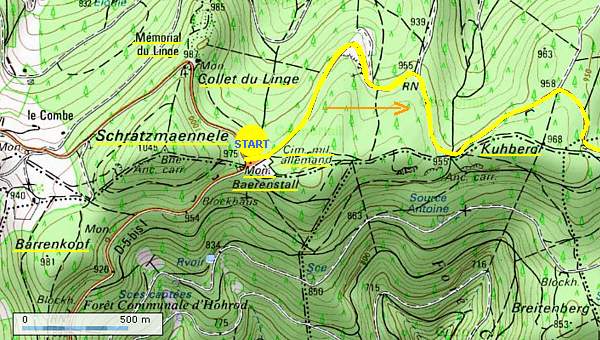
At the southern foot of the Schratzmännele, on the junction with the Hohrodberg, called the Baerenstall...

... some Germans built this cairn and the smaller one next to it. Early in the war the German regiments started to erect their own monuments along the front.
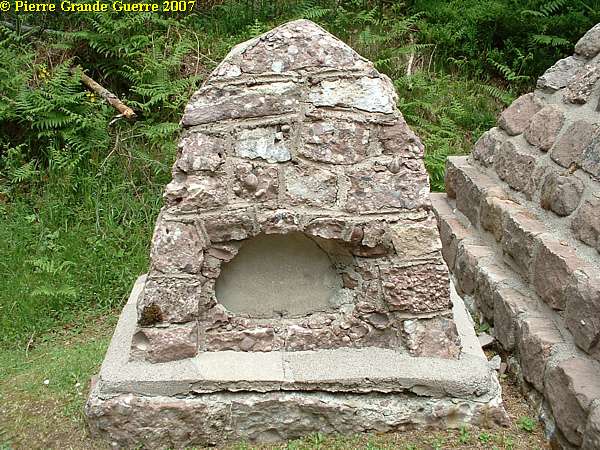
By vandalism after the war, most of the medaillons with inscriptions have been destroyed. Only this medaillon survived the vandalism.
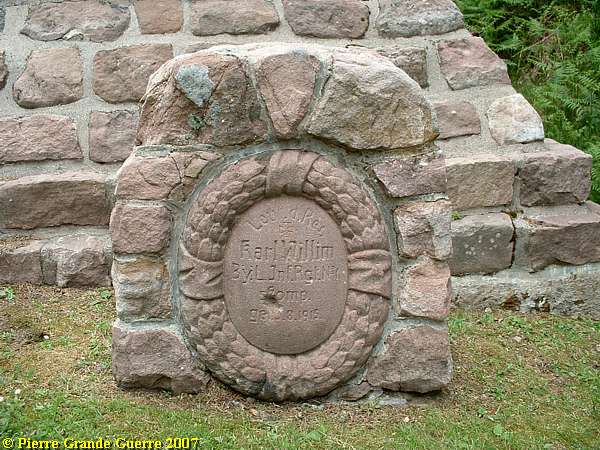
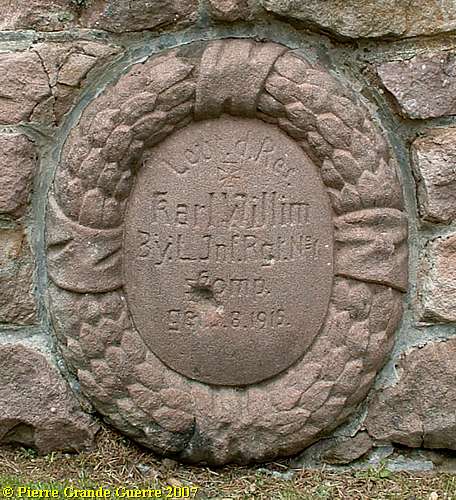
The German attacks of February 1915
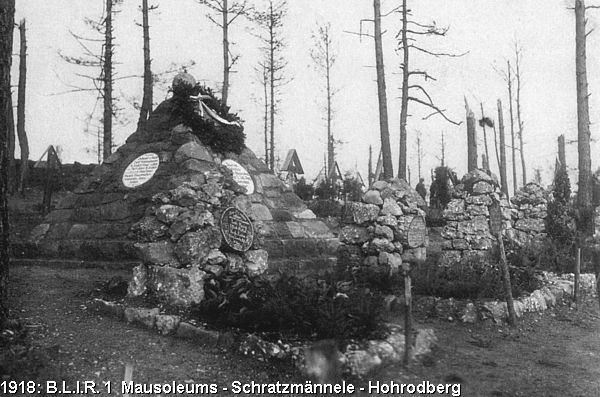
During the hard winter of 1915 the Germans launched again a series of attacks. On 22 January the Germans launched fierce attacks at the summit of the Vieil Armand or Hartmannswillerkopf. On 22 February 1915 the Germans captured Metzeral, on the 19th they occupied the nearby Reichackerkopf. During this week the Germans also bombarded the Col de la Schlucht and the area behind the Vosges ridges into the direction of Gerardmer, an important connection point for supplying troops and materials to the front.
On 21 February the Germans captured the villages of Hohrod and Stosswihr, and the Hohrodberg itself. The winter conditions were so harsh that the German offensive petered out on 25 February 1915.
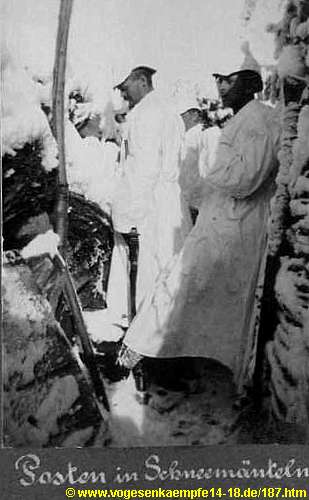
In front of the Hohrod Deutscher Soldatenfriedhof stands this German bunker.
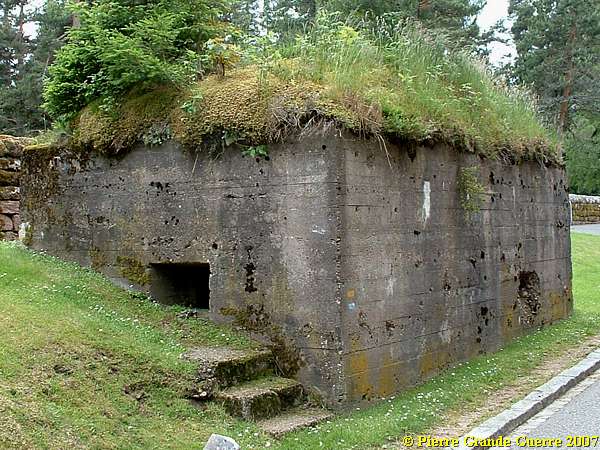
It has some holes for guarding the area around it, ...
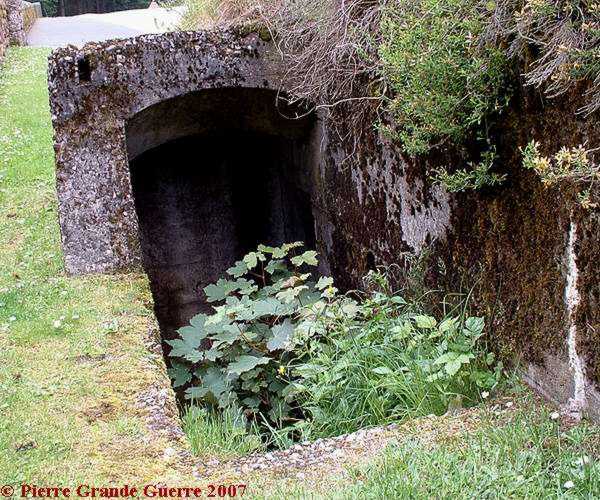
... but I presume it has also been the entrance to an underground tunnel- and "Stollen"system, a man-made cave system.

At least the bunker has been hit once.
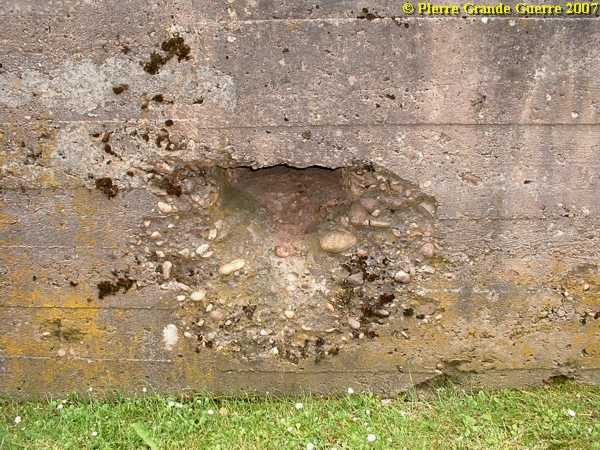
We enter the Hohrod Deutscher Soldatenfriedhof . Whatever the nationality of the buried soldiers may be, every military cemetery tells it’s own story.
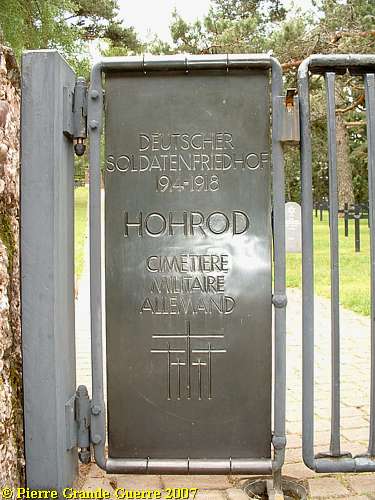
The story is always told by using few words and an almost endless list of names of fallen soldiers. Most of the German soldiers and officers buried here, have been killed during the battle of the nearby Lingekopf in the summer of 1915.
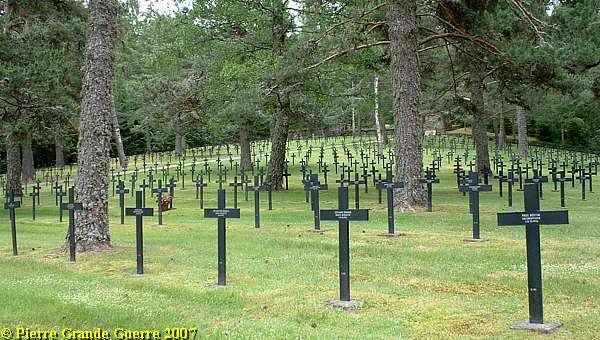

The inscriptions on this 1915 tombstone are alas not readable for me anymore.
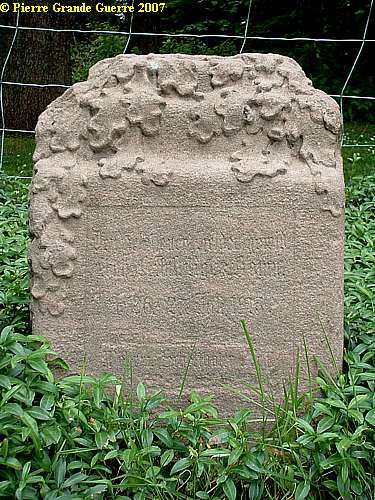
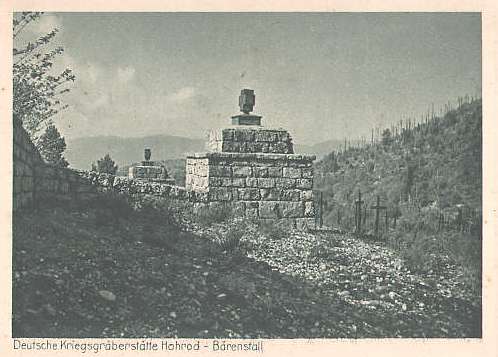
At the top of the cemetery is a mass grave marked by two short towers with inscripted plaques. The plaque on the right has fallen out of it's frame.

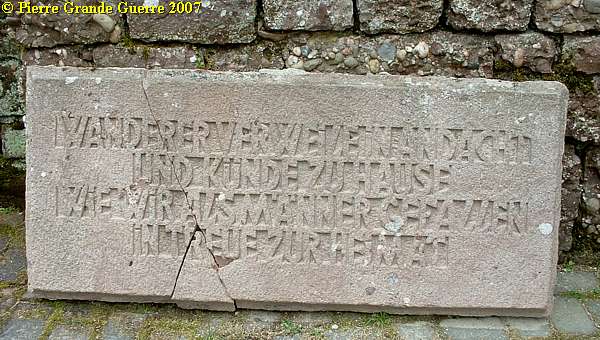
The left tower of the mass grave memorial.
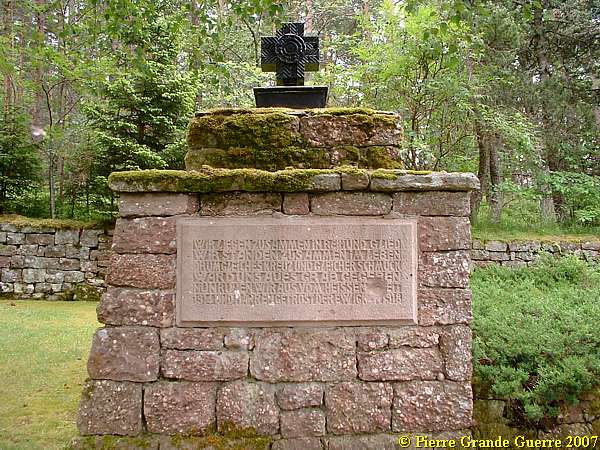
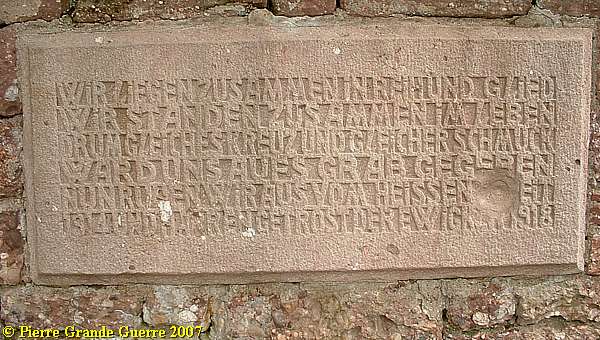
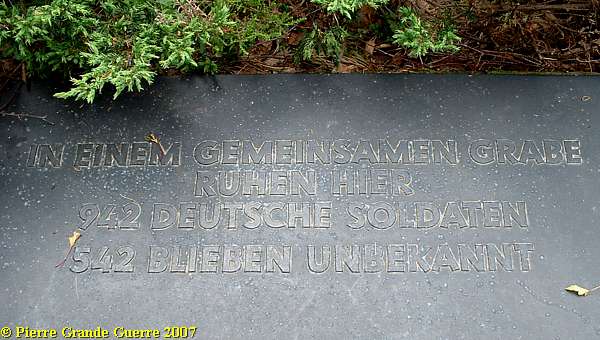
Followed by plagues with lists of names of ...
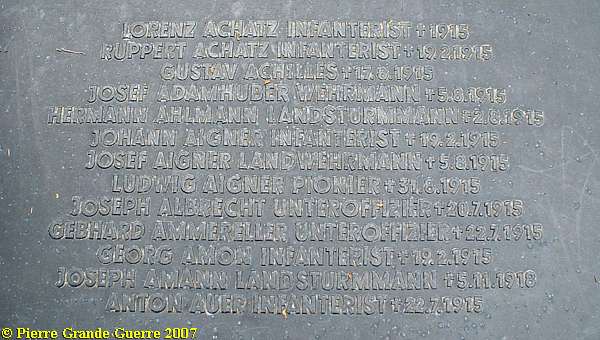
... fallen soldiers and the date of their death.
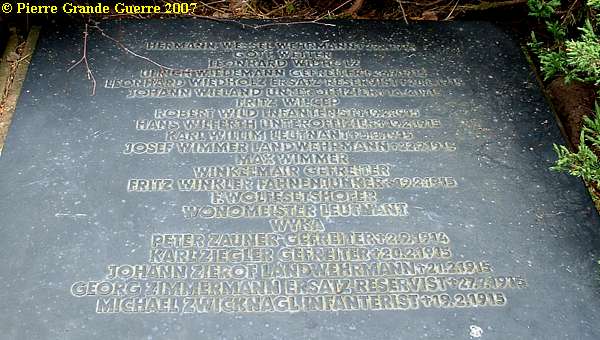
The year of 1915 is prominent on the plagues.
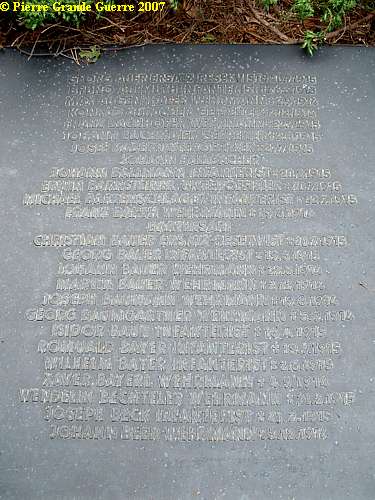
A 1915 tomb stone:
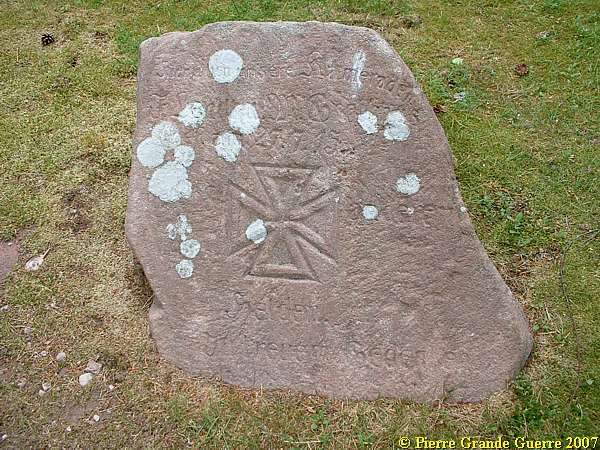
And as always on German war cemeteries: black crosses, ...
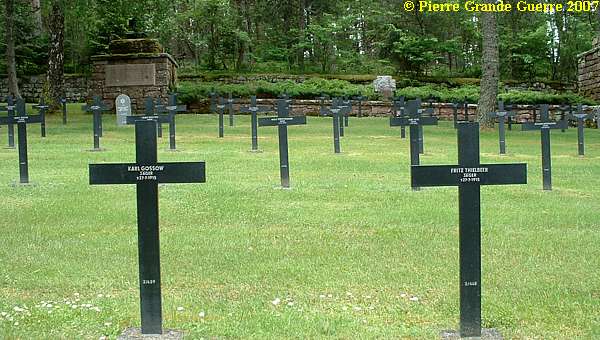
... sometimes shared by 2 or 4 buried soldiers.

With a last view from the cemetery into the direction of the road, we go right and drive on to the Grand Hohnack.
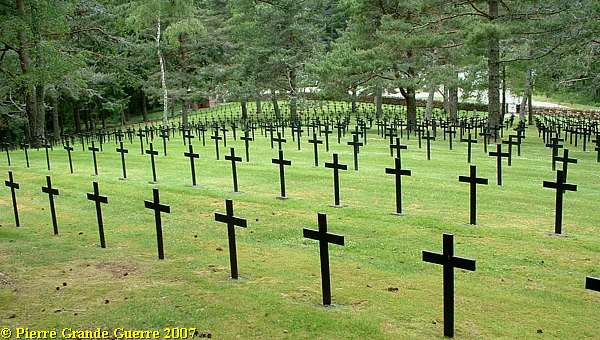
We follow on along the D 11VI eastward, staying on the slope of the Hohrodberg.

This road, running from Les-Trois-Epis to the front line at the Kleinkopf, used to be a "street" with a lot of bunkers along it and a 60 cm. railway. The road was an important supply route for the Germans.
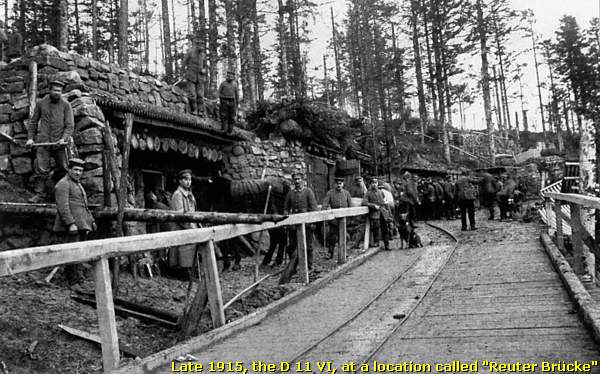
On the verge of the road we detect this German field altar, also made of concrete. The Catholic grails are still to be seen, the text is alas not readable anymore.
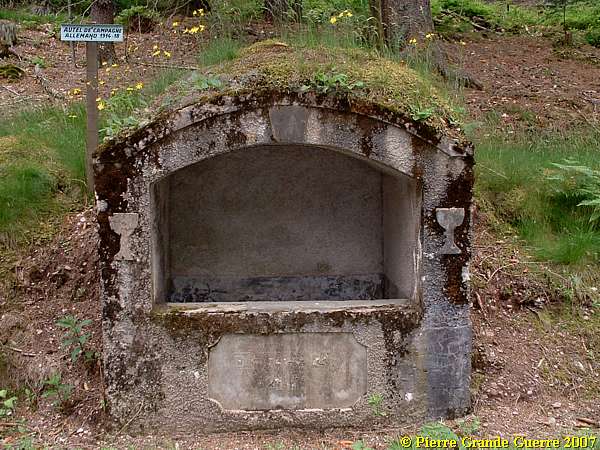
Furtheron, driving very slowly at walking speed, we detected some German shelter bunkers, ...
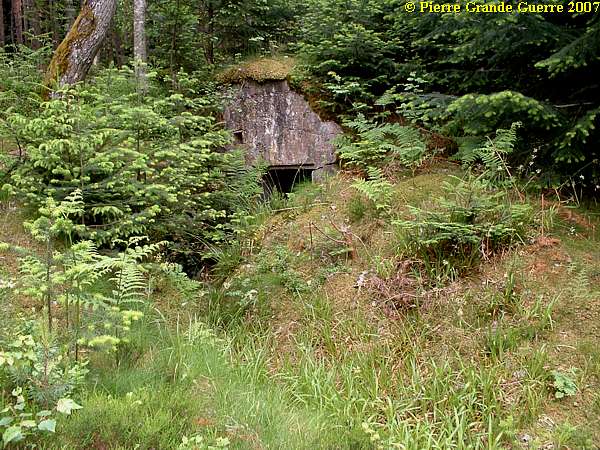
... overgrown and hidden in the dense wood.
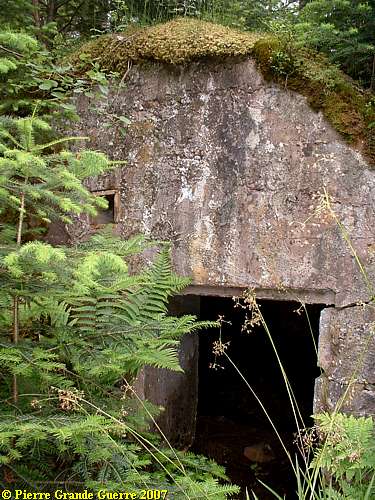
We arrive now at the slopes of the Kuhberg.
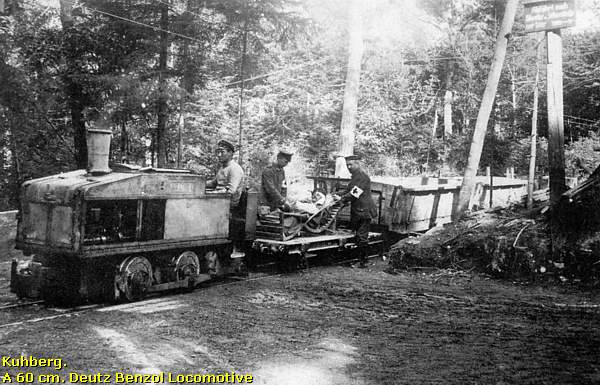
This bunker lost it's roof, ...
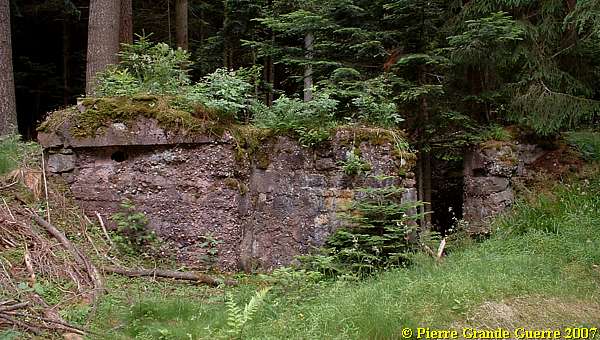
... and it's interior is overgrown.
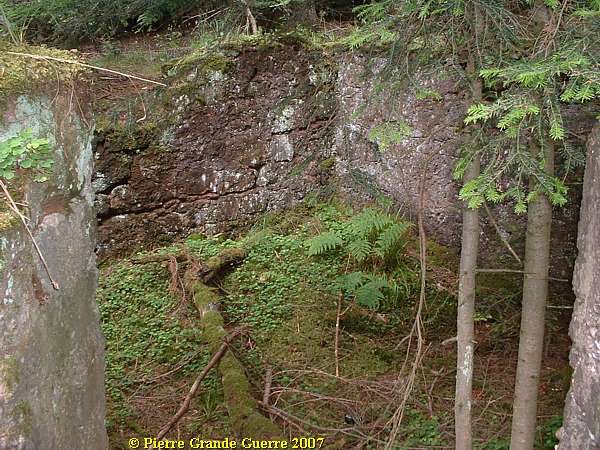
Same bunker in 2009.
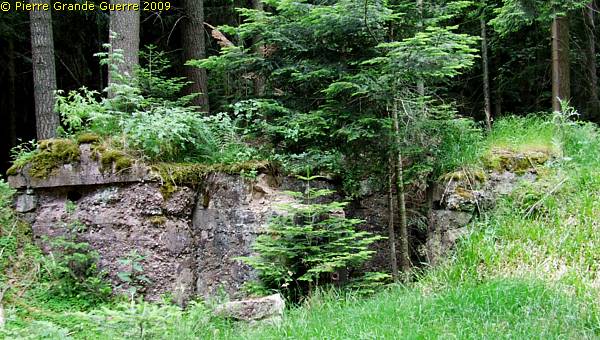
We continue to the pass of the Grand Hohnack.
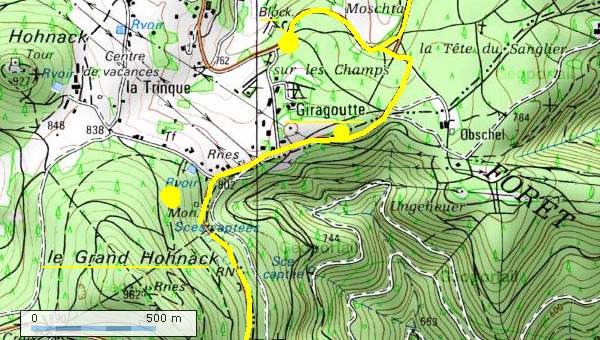
Along the D 11 VI, the hikers path, GR 523, we continue upward passing the summit of the Grand Hohnack (976 m.).

On the corner of the road and the path a memorial crucifix, a flagpole, and the memorial for the "Diables Rouges", the Red Devils of the 152e R.I.:
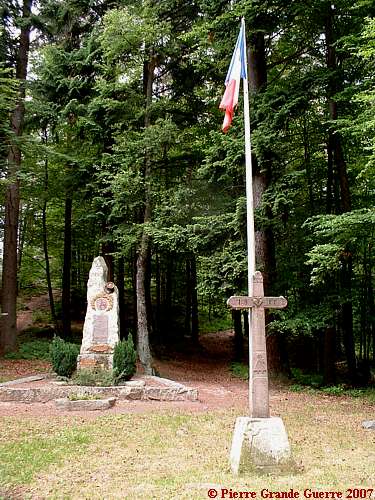
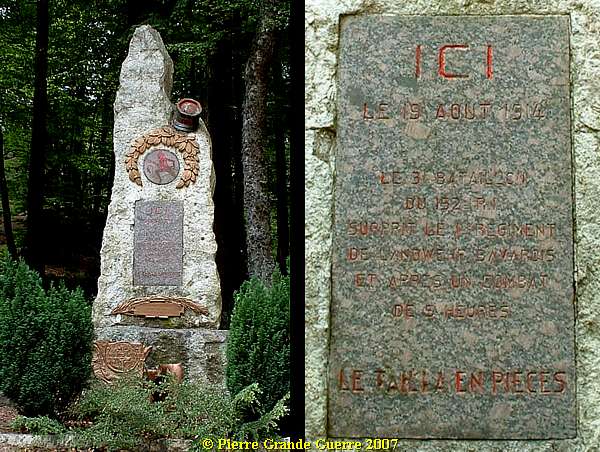
Like the memorial of the reclining, dead soldier at the Cemetery at the Col du Wettstein has been a gift of the Red Devils Regiment to the Battalions of the Blue Devils (Chasseurs Alpins) , this memorial has been a gift by the Blue Devils to their comrades in arms of the Red Devils.
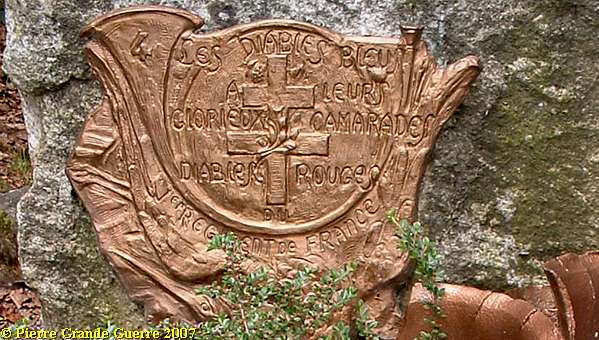
The kepi with the red top gives the memorial a personal touch. Of course the sculptor added the symbol of the Red Devils.
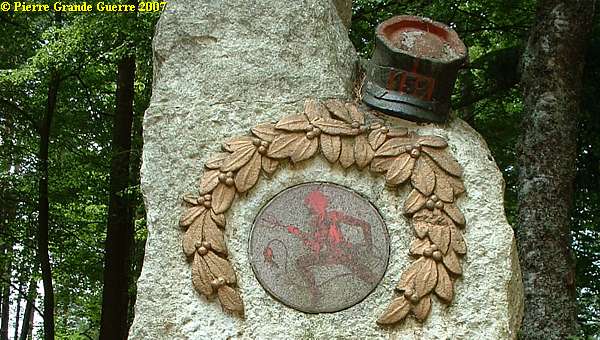
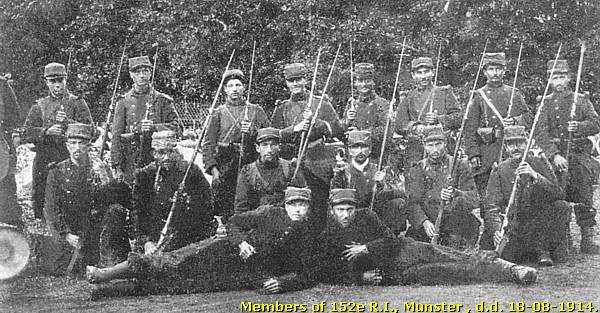
We continue along the D 11 VI into the direction of Giragoutte to find this German bunker at the northern side of the road, constructed and dug in the slope of the mountain.
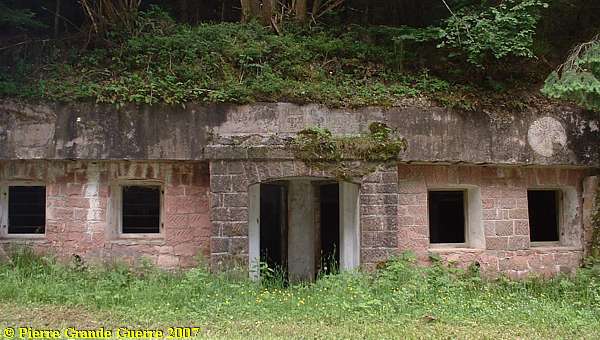
From the German occupation of this sector in February 1915 it used to be the entrance to an underground German Dressing Station. It has been improved in 1917.
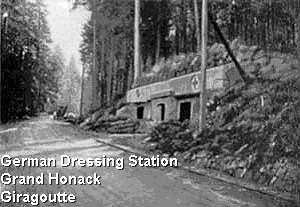
The circle shaped spots still tell us, where the Red Cross symbols were located on the architrave. The text on the architrave is not readable anymore, only some lose characters.
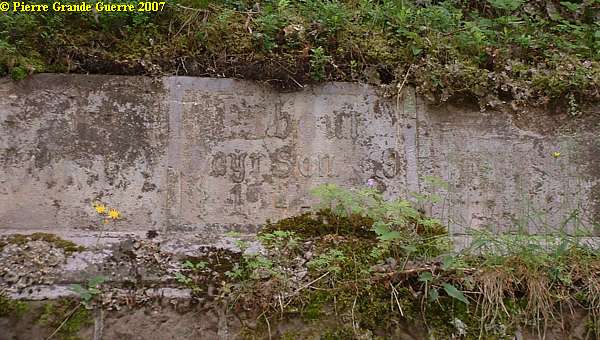
Thanks to this 1919 picture the text of the inscription was:
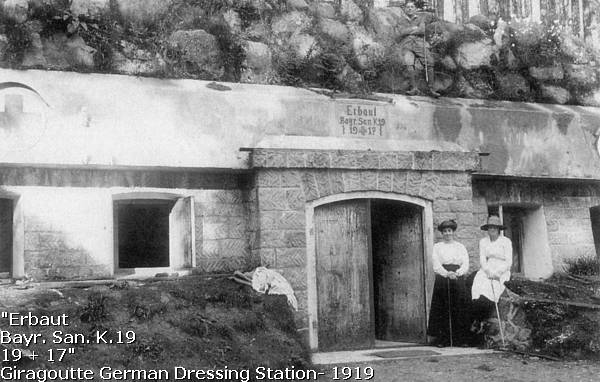
I went inside. In the walls at the back of the 2 rooms, ...
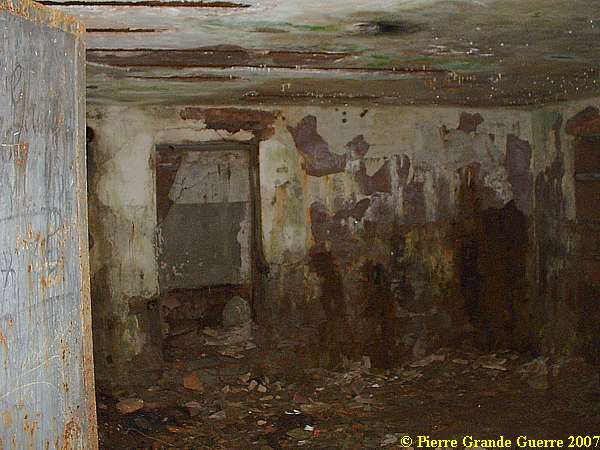
... I could still find door openings, leading inside the mountain, which are now filled in.
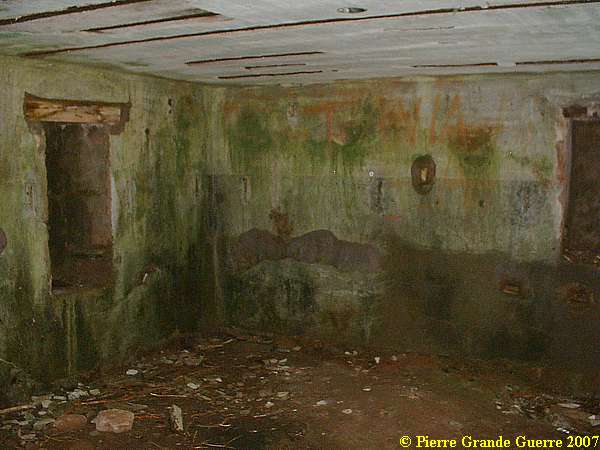
These filled in corridor tunnels were also giving entrance to an underground "Stollen" system.
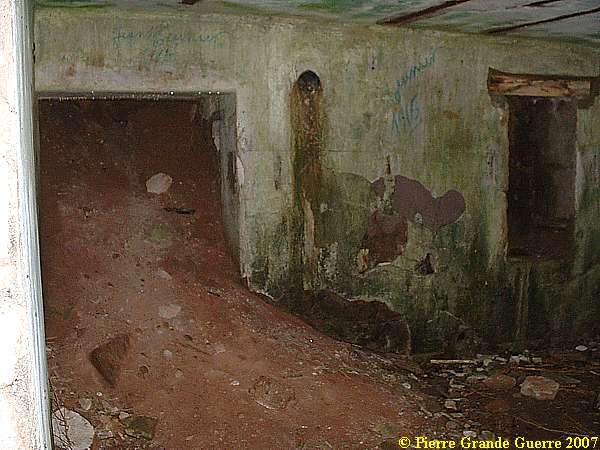
Some 500 m. further on we detect other entrances to underground tunnel systems.
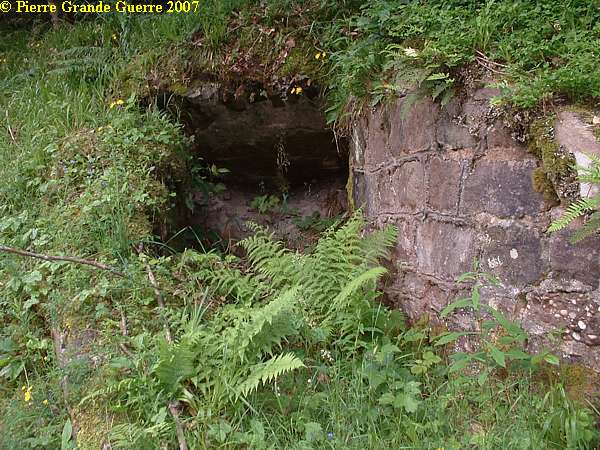
Another 100 m. further on on the same side of the road this armoured door and entrance to an ammunition bunker.
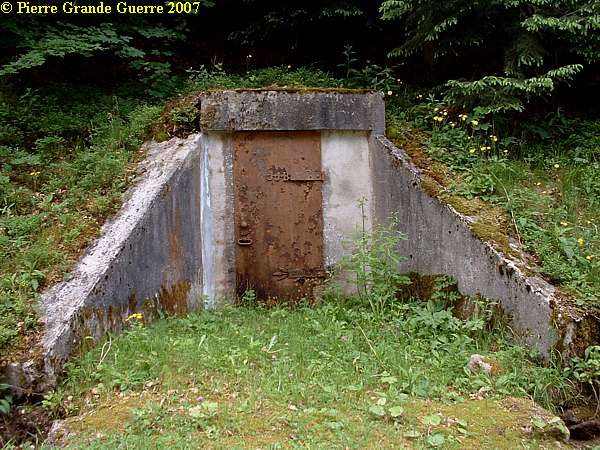
We are going on further eastward, at the 3-way junction we turn left.
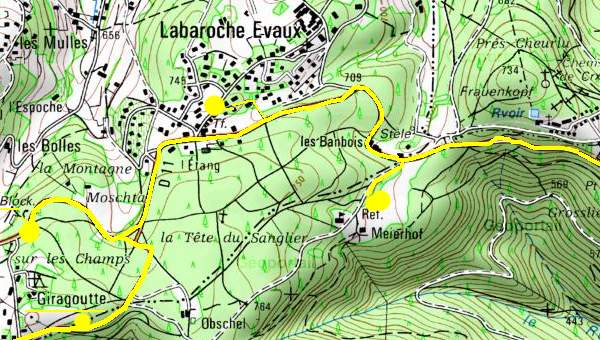
After the second curve of the road, we park our car, and we descend on the northern side of the road ...
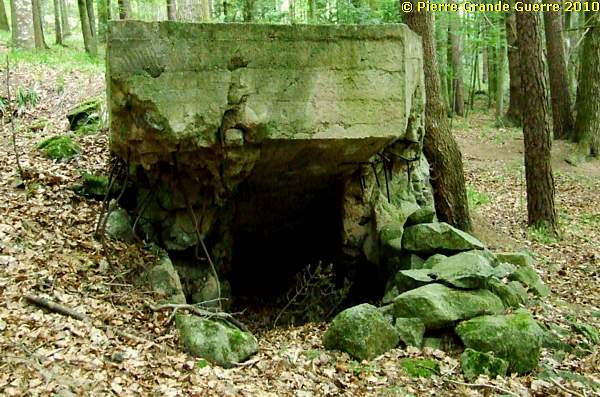
... a track in the wood downward to this bunker.
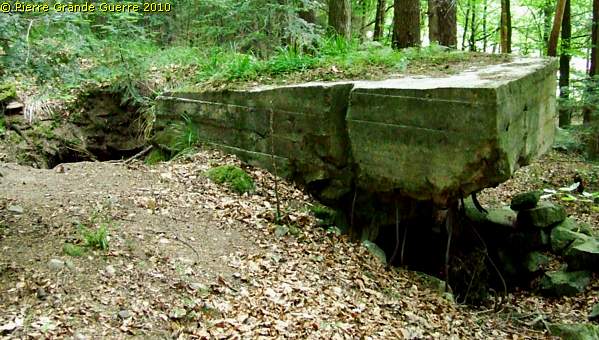
We return by car to the junction and continue along the D 11.

In the verge of the 3rd curve we park our car to descend another track to this memorial at the outskirts of Labaroche Evaux .
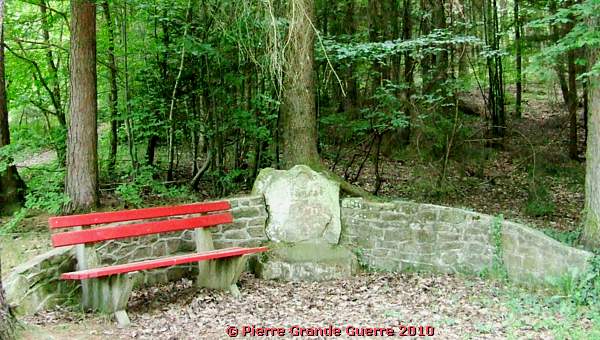
It is a German memorial Stone, dedicated to General Otto Reuter, who commanded several Reserve and Landwehr Brigades during the battles in the Vosges.
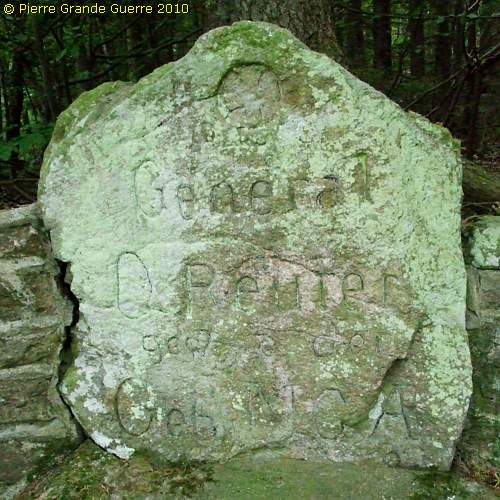
We return to our car and follow again the D 11 eastward.
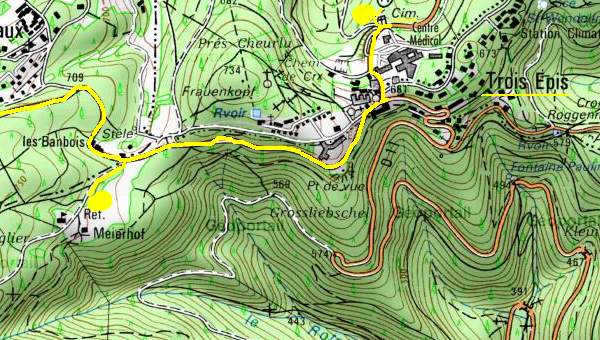
Opposite the "Relais au Trois Epis" we go left and we enter a forest road running southward for some 200 m. into the direction of "Chalet Meierhof".
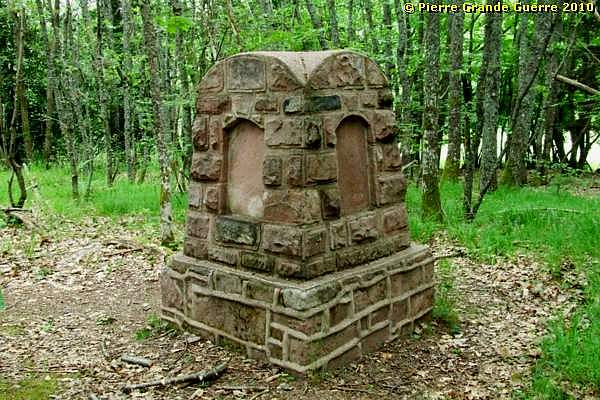
It is a memorial of a Gebirgs-Maschinengewehr-Abteilung, a special mountain machine-gun unit. Only one side is still partly readable.
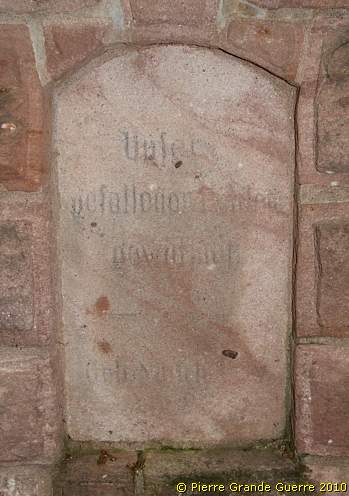

From here we return to the D 11 to continue eastward to the hamlet of Les Trois Epis.
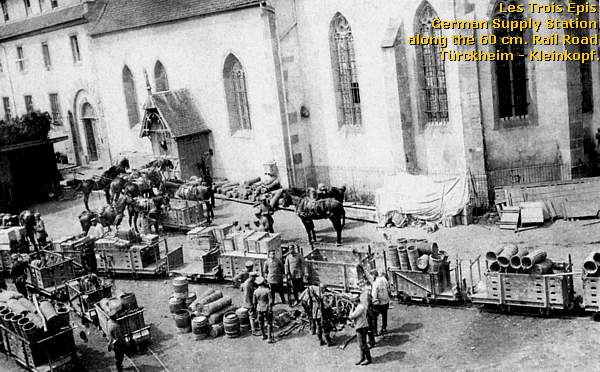
At the northern outskirts of the hamlet we visit...
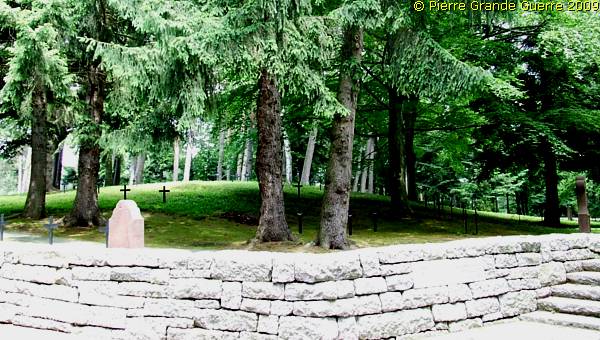
... the circle shaped ...
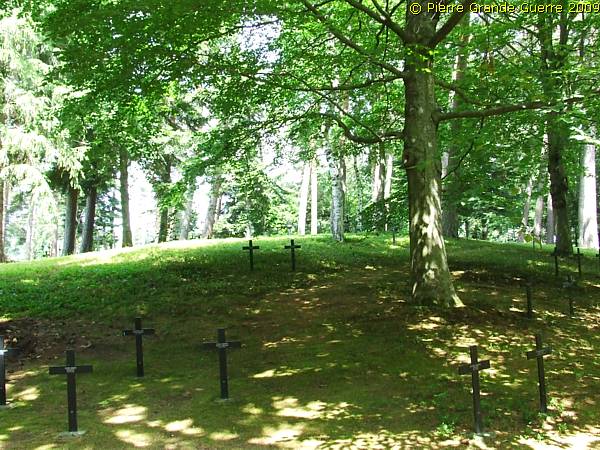
... Deutscher Soldatenfriedhof Ammerschwihr-Trois Epis .
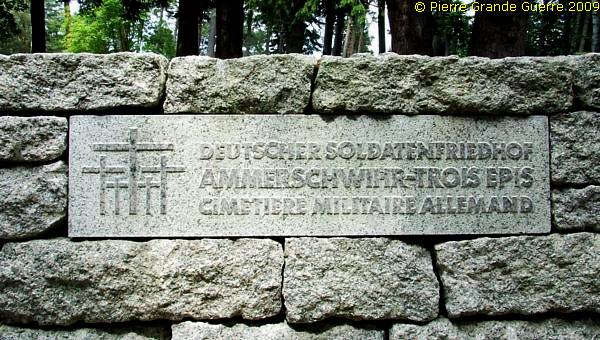
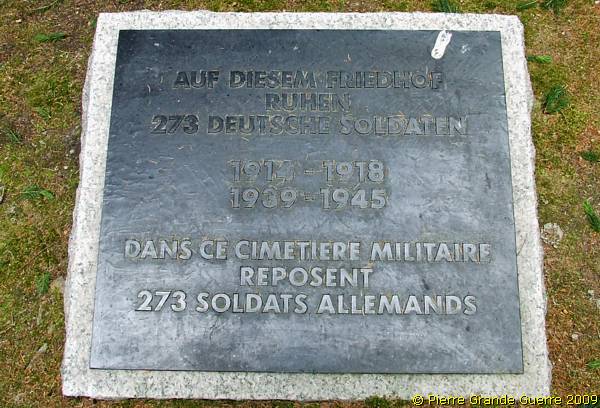
We follow the circle shaped path around the cemetery anti-clockwise.
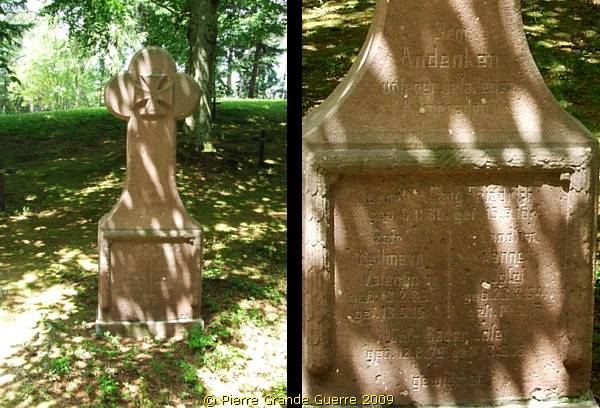
The soldiers, buried here, have been killed during all 4 years of the war.
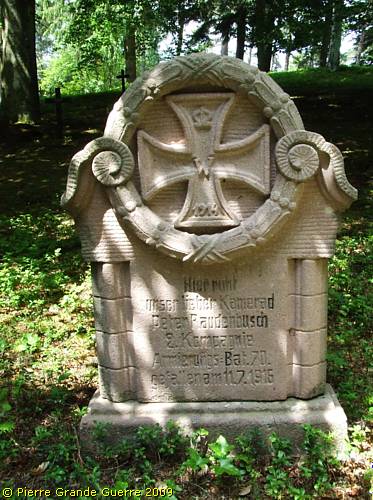
This Vizefeldwebel, Karl Kliemann, of the 1st Company of the Gardejäger Bataillon died "for King and Fatherland" on 27 July 1915.
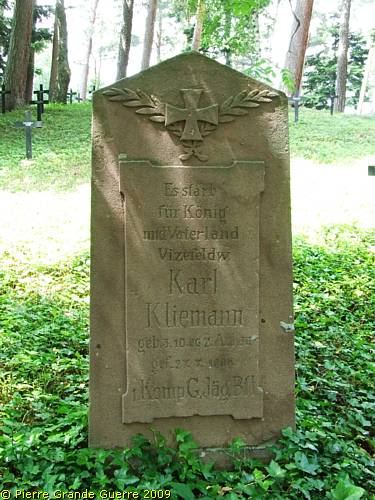
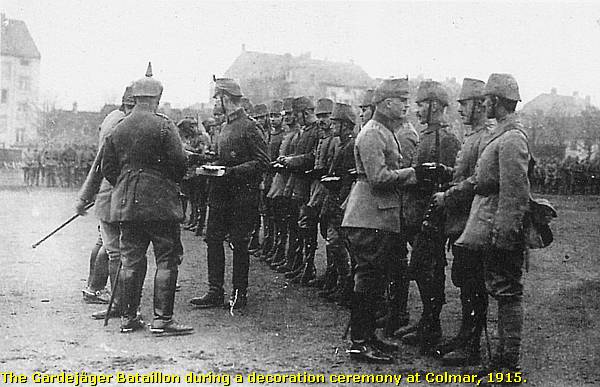
View to the centre of the circle with steel, black crosses.
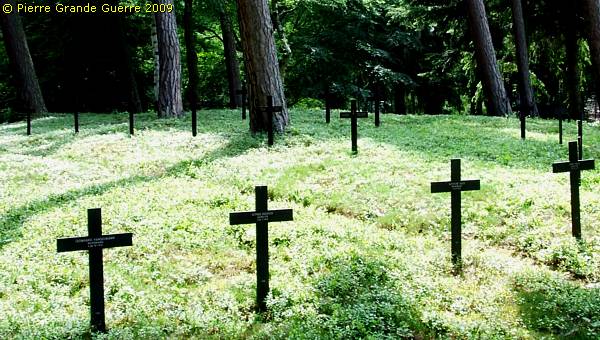
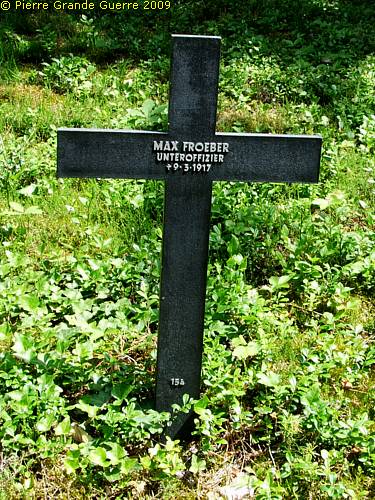
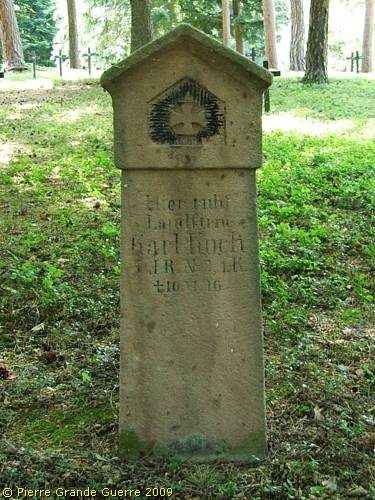
This Bavarian memorial is dedicated to several soldiers, fallen in 1918.
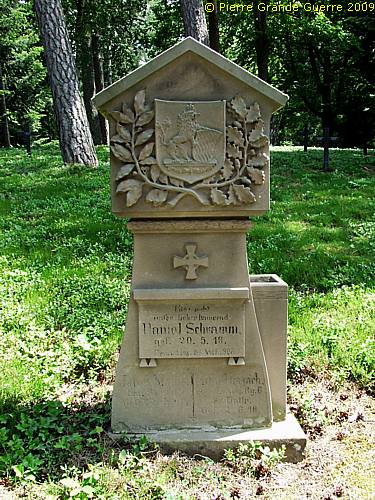
The Bavarian royal lion in this heraldic weapon with oak leaves holds the Bavarian flag with white and blue lozenges.
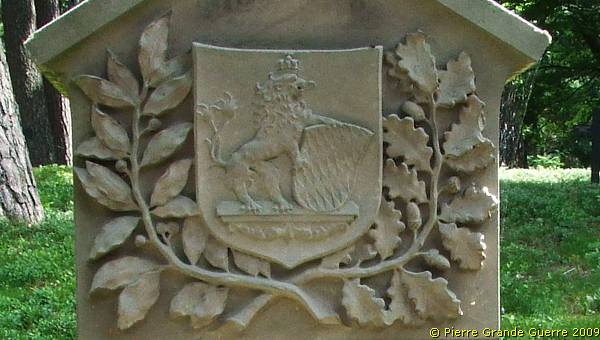
Some inscriptions are hard to read. Names of a machine gunner, a stretcher bearer, and an artillerist of B.F.A.R. 6, all fallen in 1918.
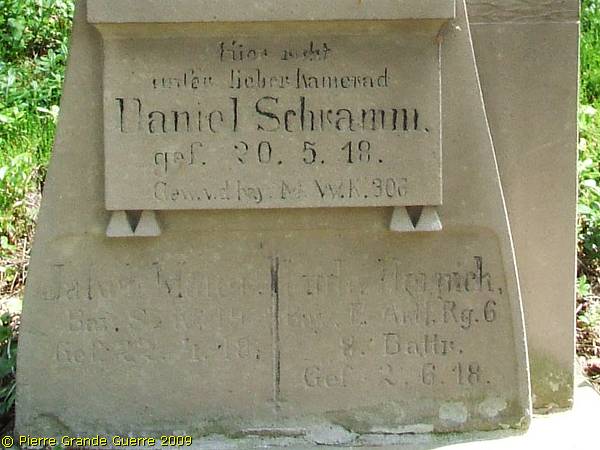
The inscription on the left side of the memorial, is dedicated to a stretcher bearer.
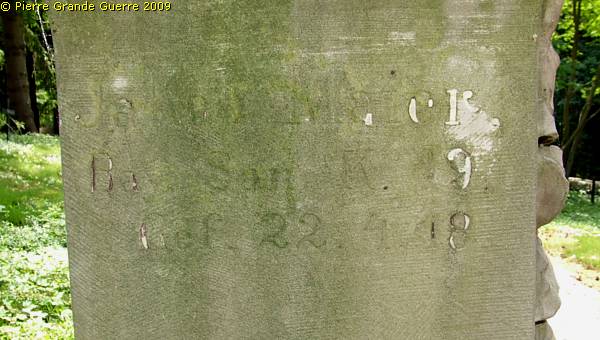
The inscription on the right side of the memorial is dedicated to an artillerist, also of the Bavarian Field Artillery Regiment 6.
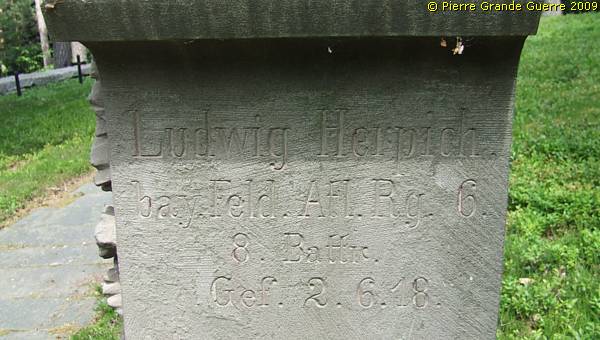
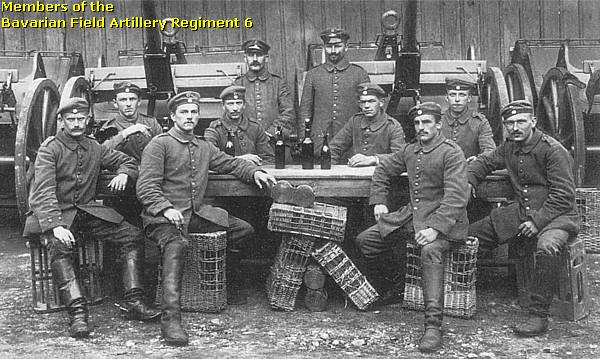
The grave of Lt. Major Frober, a cavalarist of the Bavarian Reserve Kavalerie Schütze Abteilung, killed in 1914, "witnessed by his Chief of the squadron and the NCO of the second squadron".
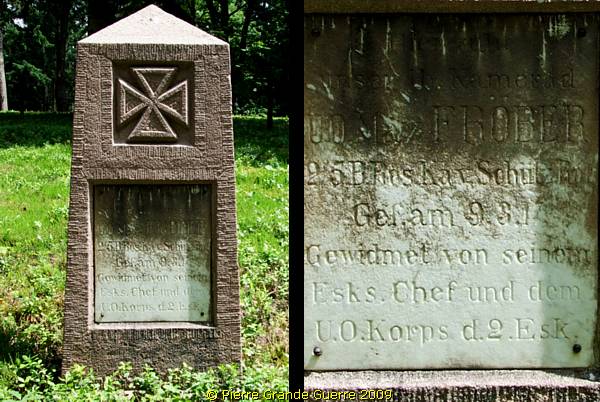
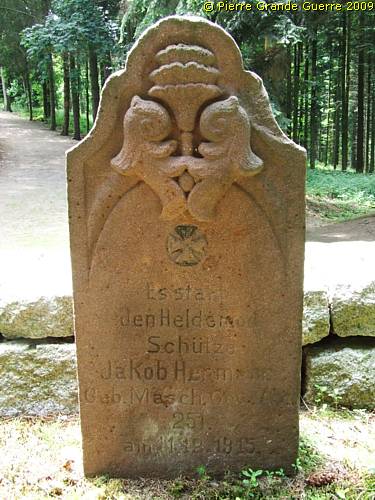
A last view over the Deutscher Soldatenfriedhof Ammerschwihr-Trois Epis.
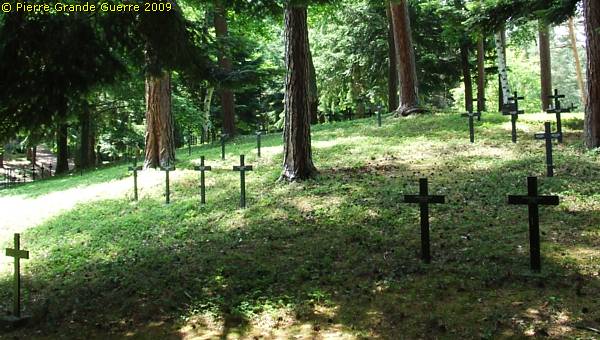
From Les Trois Epis we return back and south-westward along the same D 11 VI to the Hohrodberg for a wide panorama over the Munster Valley.
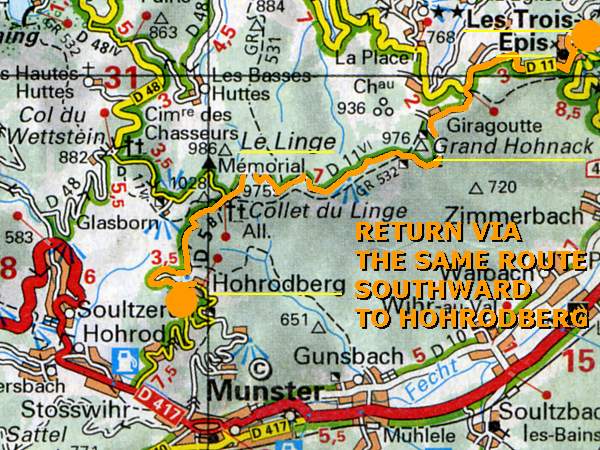
At the cairns in front of the Hohrod German War Cemetery we turn left, ...

... and follow the D 5 B1 southward.
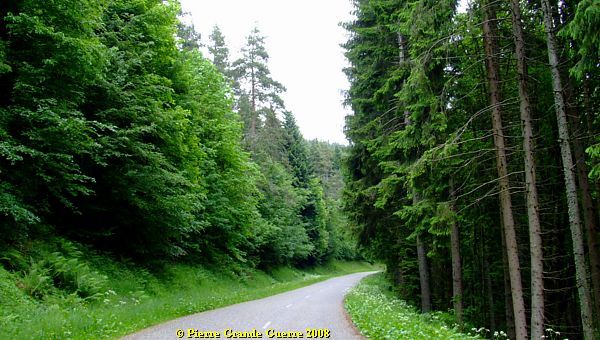
If you pass this fountain on the west side of the road, ...
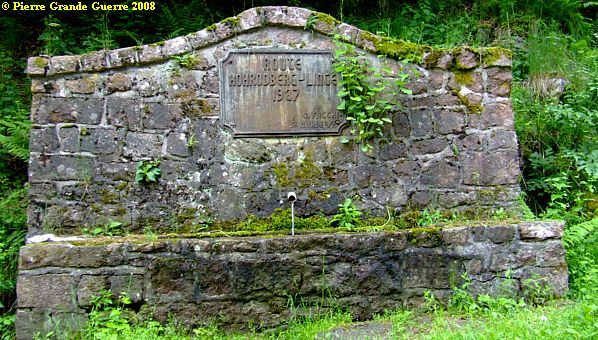
... you are only some 100 meters away from this rather hardly visible bunker in a slope of the Kleinkopf.
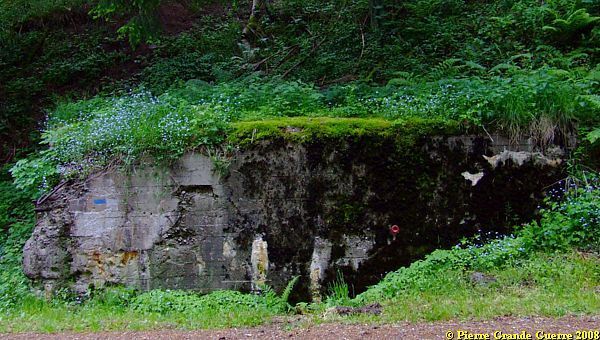
Just out of the woods, more to the south, in a curve along the road we arrive at the French Memorial at the Hohrodberg.
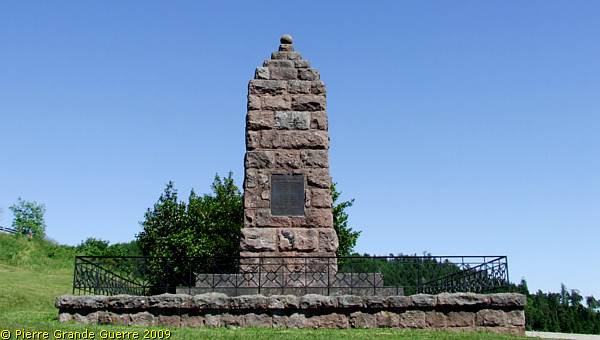
This memorial is dedicated to the civilian and military victims of the community of Hohrod of both World Wars. This plaque is for the Great War victims of Hohrod.
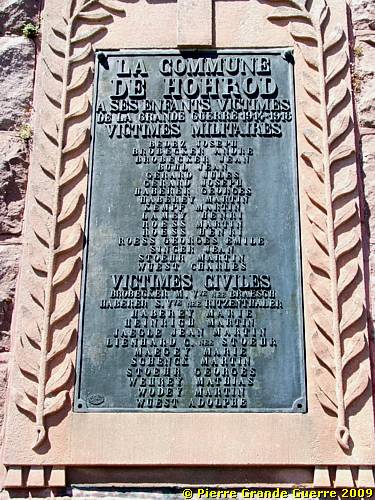
The site of the Hohrodberg Memorial offers a wide panorama view over the former battlefields.
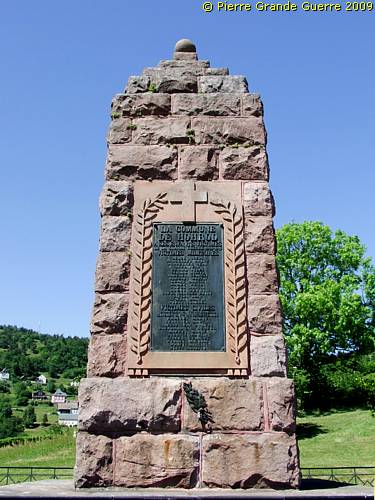
Panorama westward at the ridges of the Vosges mountains.
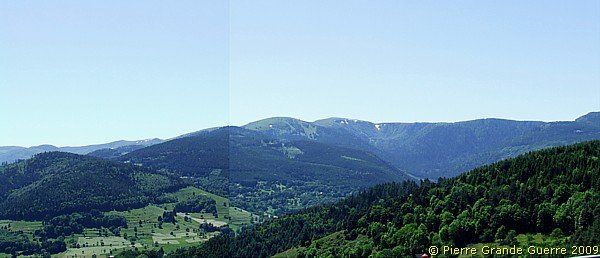
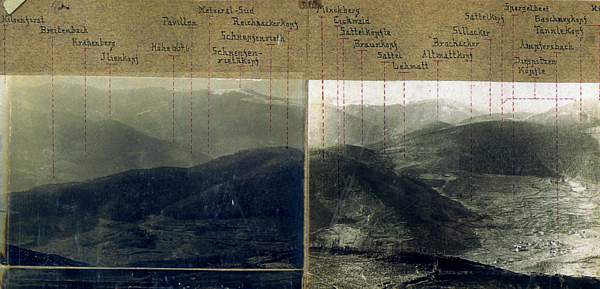
From left ro right: Reichackerkopf, Sattel, Petit Honeck, Honeck, Schlucht.
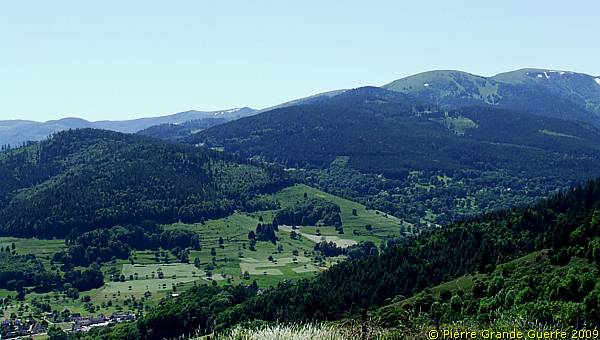
View north-west: Hohneck, Le Tanet and Gazon de Faite.
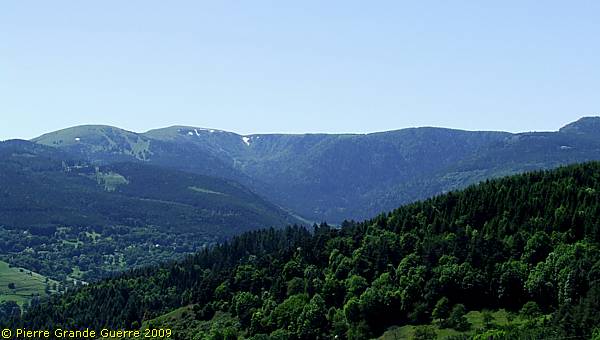
Panorama southward over the Valley of Munster.

Again from left to right: the town of Munster.

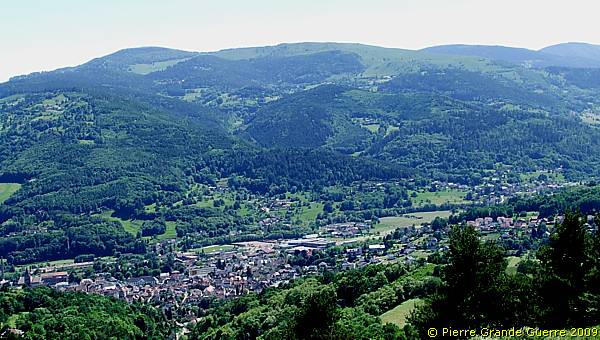
View south-west at the ridges.
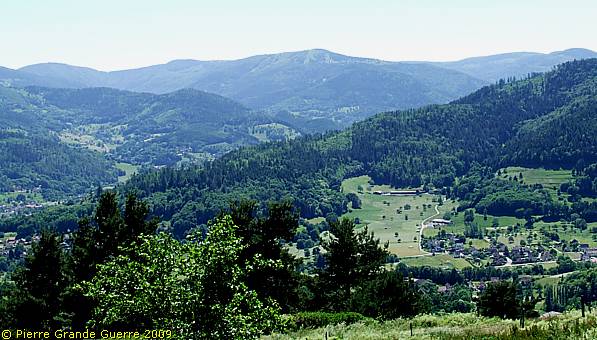
From the Hohrodberg we descend to the Munster Valley, and visit the Col du Sattel and the Reichackerkopf.
Continue
to the next chapter: " Reichackerkopf - le Gaschney
"










